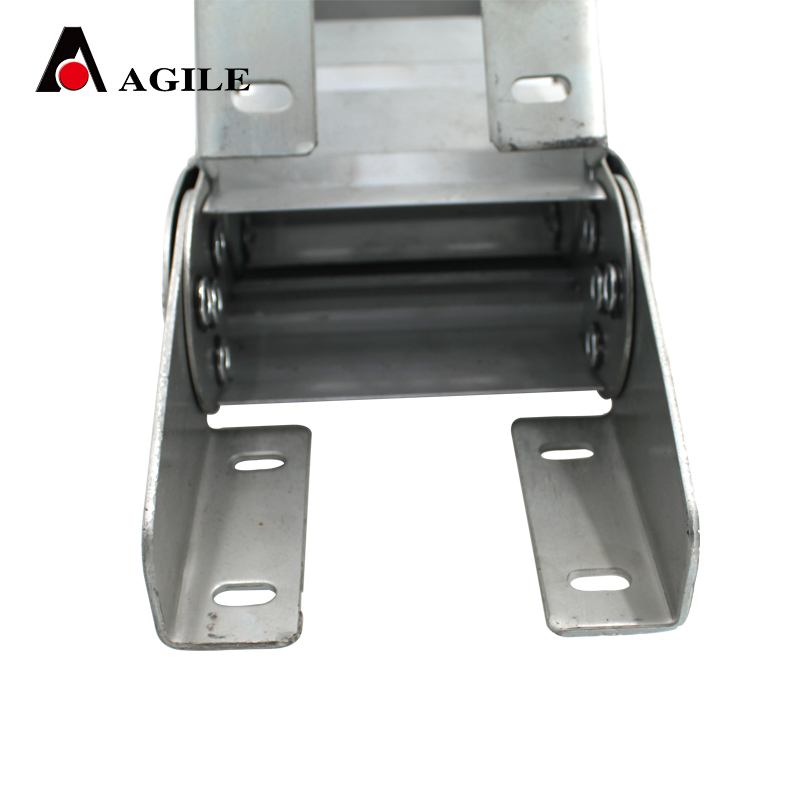Innovative Solutions for Electrical Cable Management and Chain Systems in Modern Applications
Understanding Electrical Cable Chains An Essential Component in Modern Engineering
In the realm of modern engineering and manufacturing, electrical cable chains play a critical role in ensuring the efficient and safe operation of machinery and equipment. These components, often referred to as cable carriers or energy chains, are designed to house and manage electrical cables, hoses, and other flexible conduits that provide power and data transmission to moving parts. As factories and machinery become increasingly complex and automated, the importance of electrical cable chains cannot be overstated.
The Basics of Electrical Cable Chains
Electrical cable chains are typically constructed from durable materials such as plastic or metal and consist of interconnected links that create a flexible, protective channel for cables. They are designed to glide smoothly along a designated path, thus accommodating the dynamic movements of machinery. The primary function of these chains is to protect cables from abrasion, tangling, and environmental hazards while allowing for the required freedom of movement.
One of the primary benefits of using electrical cable chains is their ability to manage large bundles of electrical cables in a tidy and organized manner. Without cable chains, cables would be at risk of becoming tangled or damaged, particularly in environments with significant movement or vibration. Thus, cable chains not only enhance safety but also prolong the lifespan of the cables they encapsulate.
Applications of Electrical Cable Chains
Electrical cable chains find applications across various industries, including manufacturing, automotive, aerospace, and robotics. They are commonly used in machines such as CNC routers, robotic arms, and conveyor systems, where movement is necessary but also fraught with the potential for cable damage. In the automotive industry, for instance, cable chains facilitate the reliable operation of electrical and hydraulic systems in assembly robots.
In aerospace, where weight and reliability are paramount, specialized lightweight cable chains are employed to ensure that all necessary electrical connections remain secure throughout the rigors of flight and maintenance. Similarly, in the robotics sector, cable chains help ensure that robots can perform precise movements while maintaining unrestricted power and data flow to their motors and sensors.
electrical cable chain

Advantages of Using Electrical Cable Chains
The advantages of utilizing electrical cable chains extend beyond mere organization. First and foremost, they significantly reduce maintenance costs by preventing cable wear and potential downtime. By protecting cables from damage, companies can avoid costly replacements and repairs, thereby maintaining efficiency.
Furthermore, the modular design of many cable chains allows for easy customization and scalability. Engineers can adjust the size and configuration of cable chains to accommodate a variety of machinery and operating conditions. Additionally, many manufacturers offer specialized cable chains with integrated features such as strain relief, which further enhances the durability of cables under dynamic loads.
Installation and Maintenance
Installing electrical cable chains should be approached with care to ensure optimal performance. Proper planning of the cable management route is essential. It is crucial to consider the required bend radius, weight capacity, and the environmental conditions the chains will face. Regular maintenance checks are also recommended to verify that the chains are functioning correctly and that the cables remain intact.
Conclusion
In summary, electrical cable chains are a vital component in the design and operation of modern machinery and industrial processes. By providing structure and protection to electrical cables, they enhance operational efficiency and safety in a wide range of applications. As technology continues to evolve, the demand for effective cable management solutions like electrical cable chains will only grow, solidifying their place as an essential element of modern engineering.








